SINCE its inception in 1968 the Toyota Hilux has become a renowned nameplate on the bakkie landscape, and over the years a host of rivals have stepped up to the plate to try and emulate what the Japanese marque has created.
Admittedly, some have fallen by the wayside while others like the Ford Ranger have given the Hilux a run for its money on the sales charts. Even on its last legs and having been being rather long in the tooth, the Hilux continued to be SA’s best-selling model well into the end of the life of the last generation. Now the seventh iteration of the model has been launched locally.
From a styling perspective, the latest model features a more prominent front façade that brings it in line with models such as the Corolla with that chrome finish grille and squared off light clusters. There are blistered wheel arches at each corner that give the model a very stocky poise, while the rear has similarly design taillights to its predecessor, arguably part of keeping the model familiar to customers.
The overall size of the vehicle has been expanded with the new model now 75mm longer and 20mm wider. Lengthwise, it now measures 5,335m, while the wheelbase is 3,085m, giving the cabin a bit more interior space than in its predecessor. The rear quarters now feature more space thanks for seats of a slightly more slim design.
The interior also features a 12-inch tablet-like infotainment screen, which livens up the cabin, while the instrument cluster is not too dissimilar to some of the other products from the stable, including the Rav4.
The layout is in a manner that is agreeable with finding all the switchgear easily.
Available in three body forms; single cab, extra cab, and double cab, the range as before will cater for both the commercial and leisure markets, the latter being a prominent aspect among double cab owners.
Two petrol engines are carried over from the last generation in the form of the 2.0l (102kW and 183Nm) and 2.7l VVT (122kW and 245Nm), both slightly tweaked for efficiency. The 2.4 (110kW and 343Nm) and the 2.8 turbo diesel (130kW and 420Nm) are new engines to the stable with the automatic version of the 2.4 getting a higher torque output of 400Nm. The brawny 4.0l V6 with 175kW and a new six-speed manual transmission has been introduced to the range and it is quite a smooth operator with none of the shimmy through the gear lever that characterised its predecessor.
At launch, we managed to sample the double cab, 2.8 turbo diesel variants in both manual and automatic options and it was the former that truly impressed thanks to its fairly slick operation and iMT (intelligent manual transmission) function, which automatically double-declutches on down changes in order to match engine revs. This ensures very smooth gear changes and less of the jerkiness that is associated with conventional manual gearboxes.
With the body on frame construction still the order of the day in the new model, the engineers have managed to lengthen the rear leaf springs by 100mm, while the rear suspension points have been moved forward by 100mm and lowered by 25mm in order to enhance steering stability according to the accompany. Overall torsional rigidity has been increased by 20%, while wheel travel has also been increased by 20%, which came in handy while negotiating some axle twists during the off-road section of the launch.
On road, the new model now displays a more polished ride quality than its predecessor with less of the shimmy and scuttle that plagued its forebear. Minor vibrations can still be felt over some overly scarred tar though, but nothing worse than, say, in the Ranger. The Volkswagen Amarok, in my books, still has the more superior ride quality in the segment.
Safety has not been skimped either with all models now offered standard with driver airbags and ABS brakes, while higher specification models also come with a modicum of driver assistance systems including hill assist control, stability control, trailer sway control, and drive mode select (only on iMT models) with Sport and Eco modes. Towing capacities on all models are 750kg unbraked, while braked range from 1,500kg to 3,500kg depending on engine capacity.
The Hilux has moved the game on compared to its predecessor and matches the Ranger in many respects, save perhaps on the performance front where the 3.2 turbo diesel in the Ranger feels that much brawnier through the rev range.
Pricing on the new Hilux is also in the ballpark of competitors at R228,900 to R593,900 with some variants in fact coming in around R3,300 cheaper than the outgoing model. Built at the company’s Prospecton, Durban plant in KwaZulu-Natal, it will be interesting to see just how many units of the Hilux the firm will shift per month relative to Ford, notwithstanding the fact that the South African market in general has a lean towards the Japanese marque.
Toyota has done well with the new Hilux as it is now a far more accomplished proposition than its predecessor in just about all respects.
-
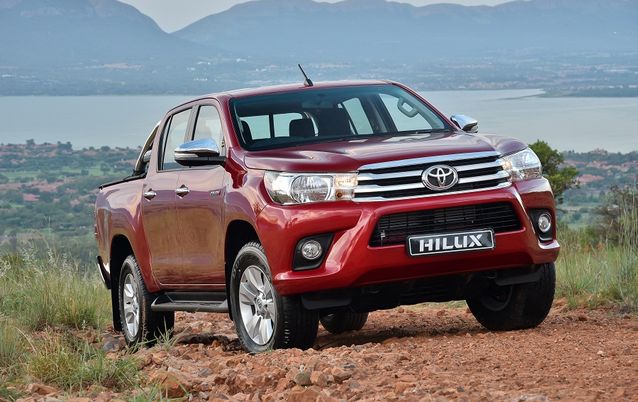
The new Hilux looks more purposeful than the previous generation. Picture: QUICKPIC
-
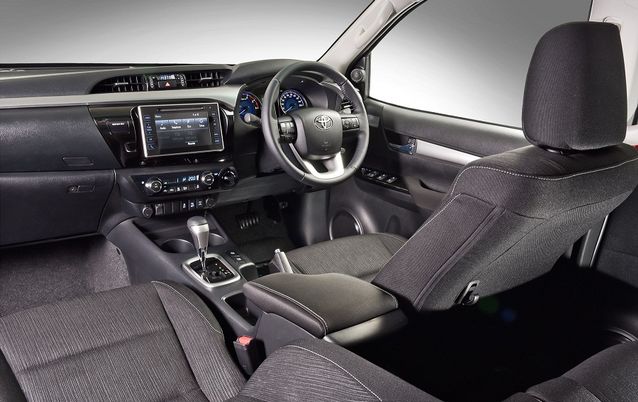
The interior is a major improvement with more space, comfort and equipment. Picture: QUICKPIC
-
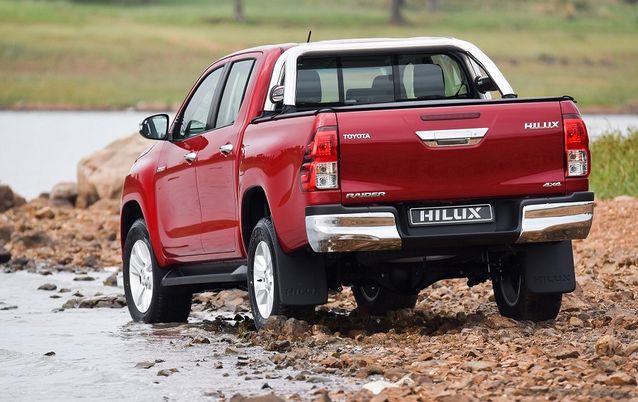
The rear is similar to the last generation. Picture: QUICKPIC
-
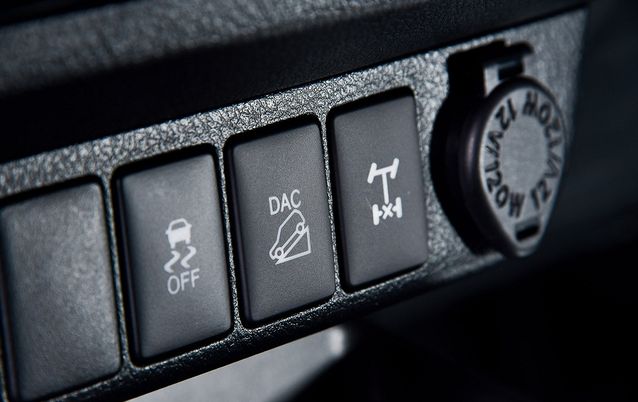
Buttons and electronics now control more of the systems. Picture: QUICKPIC
SINCE its inception in 1968 the Toyota Hilux has become a renowned nameplate on the bakkie landscape, and over the years a host of rivals have stepped up to the plate to try and emulate what the Japanese marque has created.
Admittedly, some have fallen by the wayside while others like the Ford Ranger have given the Hilux a run for its money on the sales charts. Even on its last legs and having been being rather long in the tooth, the Hilux continued to be SA’s best-selling model well into the end of the life of the last generation. Now the seventh iteration of the model has been launched locally.
From a styling perspective, the latest model features a more prominent front façade that brings it in line with models such as the Corolla with that chrome finish grille and squared off light clusters. There are blistered wheel arches at each corner that give the model a very stocky poise, while the rear has similarly design taillights to its predecessor, arguably part of keeping the model familiar to customers.
The overall size of the vehicle has been expanded with the new model now 75mm longer and 20mm wider. Lengthwise, it now measures 5,335m, while the wheelbase is 3,085m, giving the cabin a bit more interior space than in its predecessor. The rear quarters now feature more space thanks for seats of a slightly more slim design.
The interior also features a 12-inch tablet-like infotainment screen, which livens up the cabin, while the instrument cluster is not too dissimilar to some of the other products from the stable, including the Rav4.
The layout is in a manner that is agreeable with finding all the switchgear easily.
Available in three body forms; single cab, extra cab, and double cab, the range as before will cater for both the commercial and leisure markets, the latter being a prominent aspect among double cab owners.
Two petrol engines are carried over from the last generation in the form of the 2.0l (102kW and 183Nm) and 2.7l VVT (122kW and 245Nm), both slightly tweaked for efficiency. The 2.4 (110kW and 343Nm) and the 2.8 turbo diesel (130kW and 420Nm) are new engines to the stable with the automatic version of the 2.4 getting a higher torque output of 400Nm. The brawny 4.0l V6 with 175kW and a new six-speed manual transmission has been introduced to the range and it is quite a smooth operator with none of the shimmy through the gear lever that characterised its predecessor.
At launch, we managed to sample the double cab, 2.8 turbo diesel variants in both manual and automatic options and it was the former that truly impressed thanks to its fairly slick operation and iMT (intelligent manual transmission) function, which automatically double-declutches on down changes in order to match engine revs. This ensures very smooth gear changes and less of the jerkiness that is associated with conventional manual gearboxes.
With the body on frame construction still the order of the day in the new model, the engineers have managed to lengthen the rear leaf springs by 100mm, while the rear suspension points have been moved forward by 100mm and lowered by 25mm in order to enhance steering stability according to the accompany. Overall torsional rigidity has been increased by 20%, while wheel travel has also been increased by 20%, which came in handy while negotiating some axle twists during the off-road section of the launch.
On road, the new model now displays a more polished ride quality than its predecessor with less of the shimmy and scuttle that plagued its forebear. Minor vibrations can still be felt over some overly scarred tar though, but nothing worse than, say, in the Ranger. The Volkswagen Amarok, in my books, still has the more superior ride quality in the segment.
Safety has not been skimped either with all models now offered standard with driver airbags and ABS brakes, while higher specification models also come with a modicum of driver assistance systems including hill assist control, stability control, trailer sway control, and drive mode select (only on iMT models) with Sport and Eco modes. Towing capacities on all models are 750kg unbraked, while braked range from 1,500kg to 3,500kg depending on engine capacity.
The Hilux has moved the game on compared to its predecessor and matches the Ranger in many respects, save perhaps on the performance front where the 3.2 turbo diesel in the Ranger feels that much brawnier through the rev range.
Pricing on the new Hilux is also in the ballpark of competitors at R228,900 to R593,900 with some variants in fact coming in around R3,300 cheaper than the outgoing model. Built at the company’s Prospecton, Durban plant in KwaZulu-Natal, it will be interesting to see just how many units of the Hilux the firm will shift per month relative to Ford, notwithstanding the fact that the South African market in general has a lean towards the Japanese marque.
Toyota has done well with the new Hilux as it is now a far more accomplished proposition than its predecessor in just about all respects.








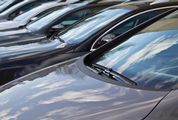












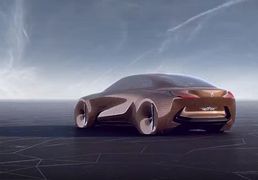

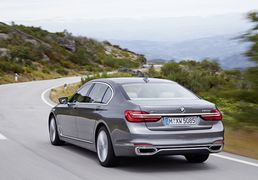
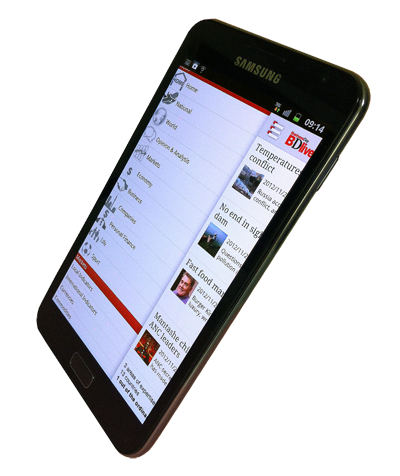




Change: -1.54%
Change: -1.49%
Change: -2.02%
Change: -0.73%
Change: -4.01%
Data supplied by Profile Data
Change: 0.12%
Change: -0.10%
Change: -1.54%
Change: 0.00%
Change: -0.25%
Data supplied by Profile Data
Change: 0.99%
Change: 0.13%
Change: 0.54%
Change: 0.74%
Change: -0.12%
Data supplied by Profile Data
Change: -2.11%
Change: -3.72%
Change: -4.04%
Change: -3.65%
Change: -2.00%
Data supplied by Profile Data